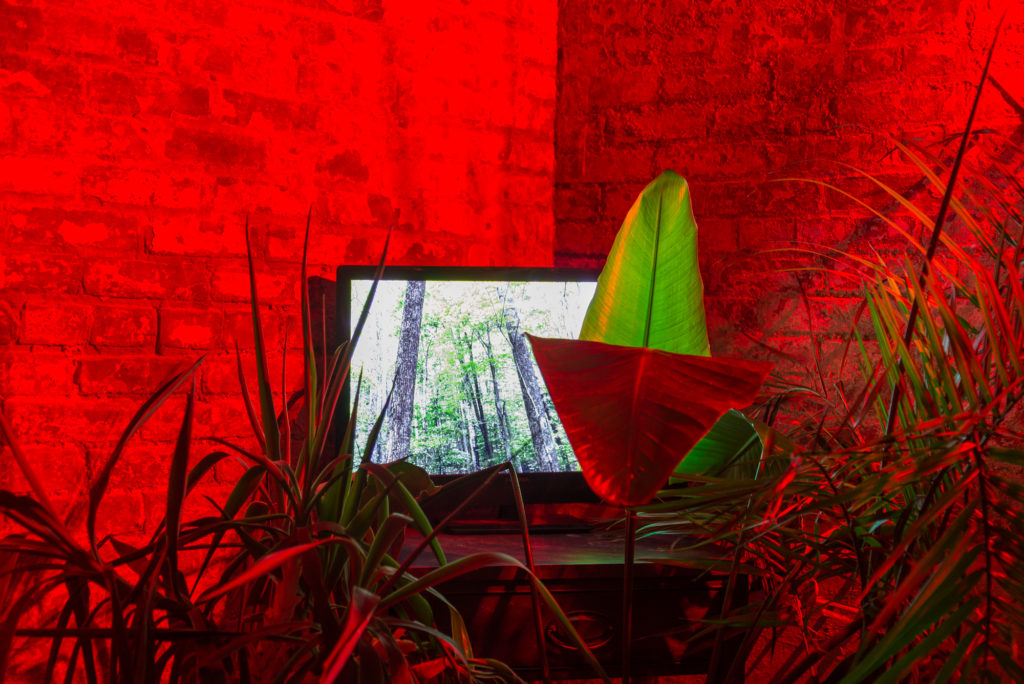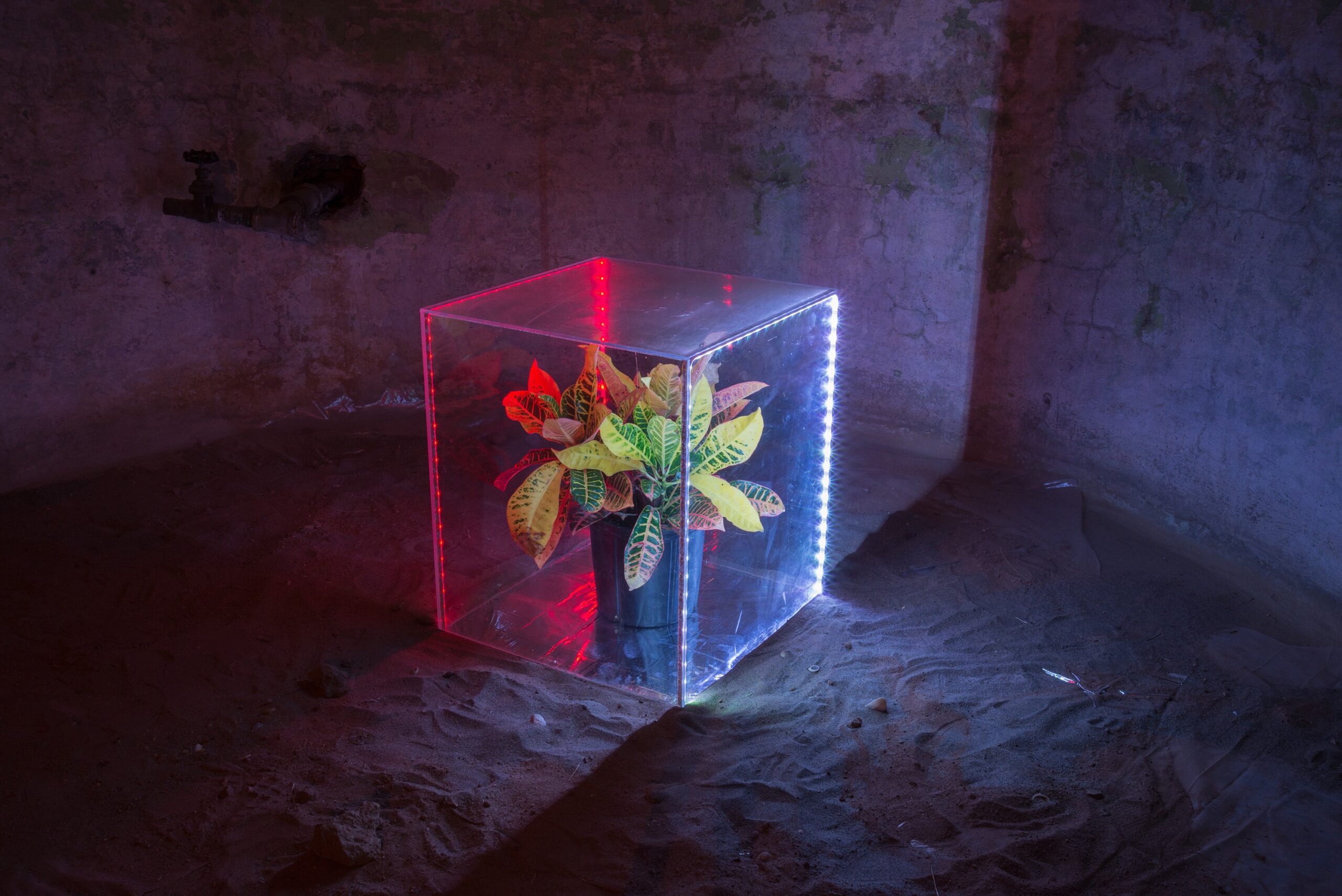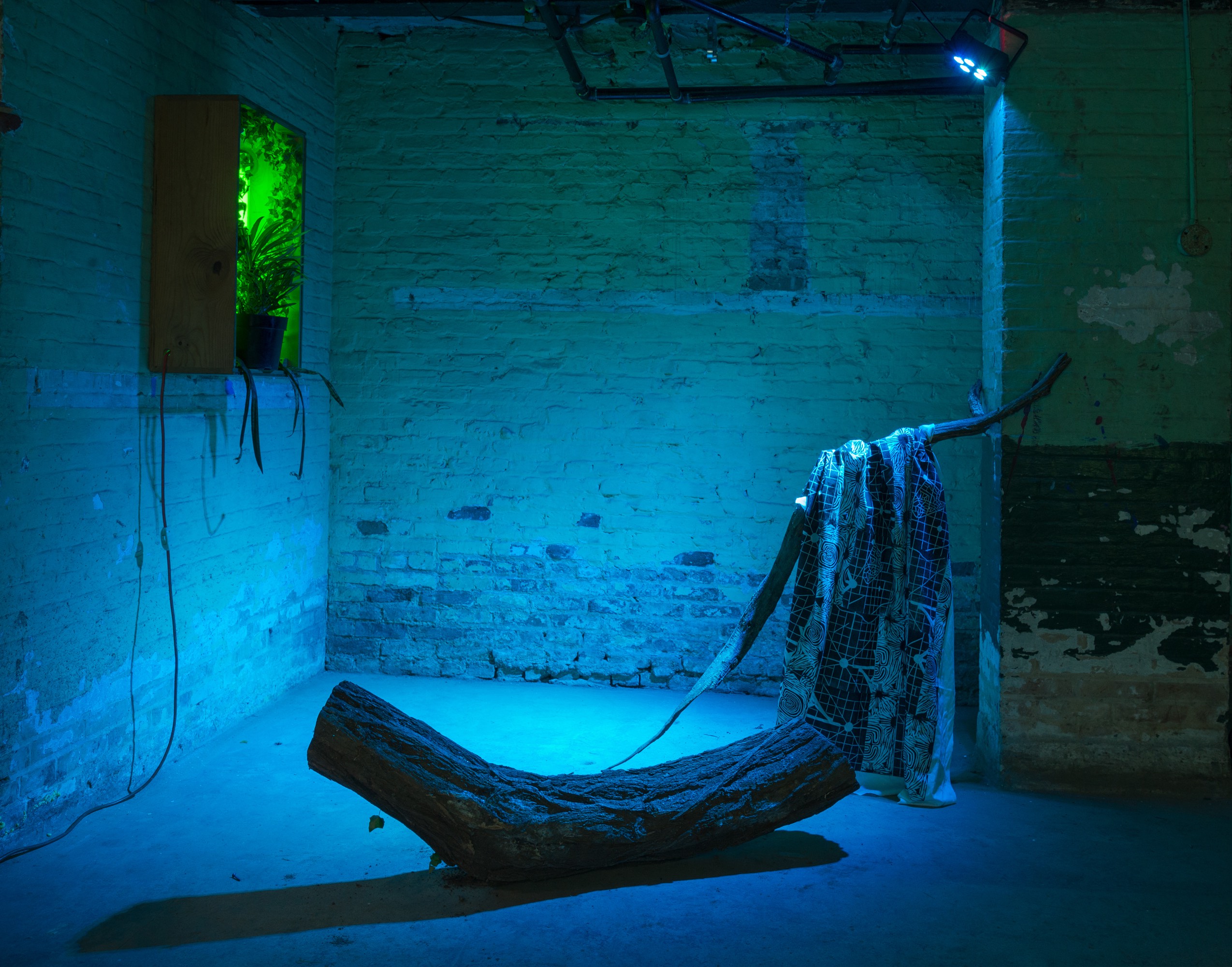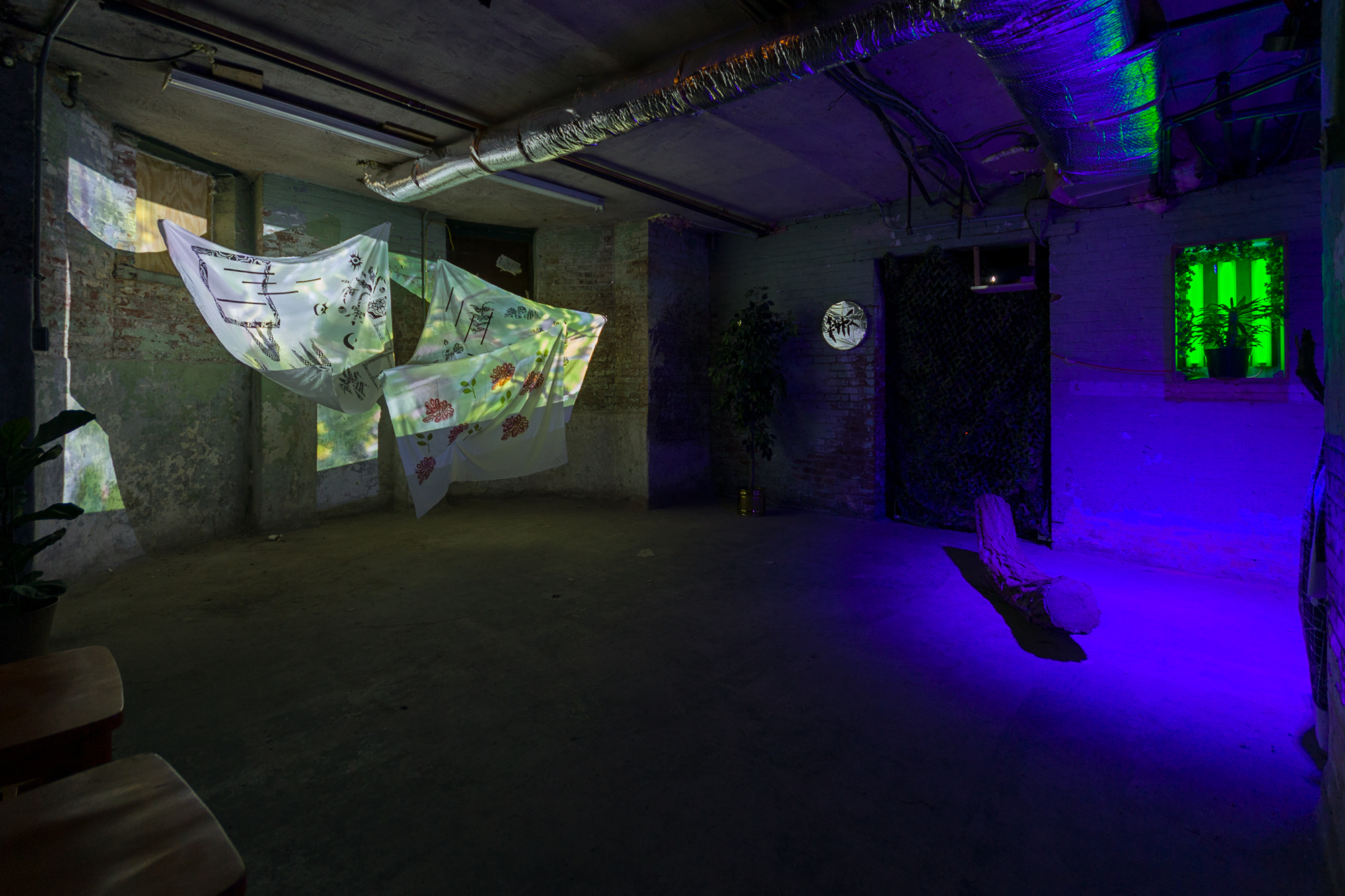
Award-winning artist Erick Antonio Benitez works across multiple media, from painting to video art to installations. One of his most recent projects, Plant~sa~tion, was done in collaboration with artist Ariel Foster and is currently on display in the cellar of El Palacio Del Sol in Baltimore. This site-specific piece explores the relationship between manmade environments and nature. Here, Benitez discusses how we experience art and nature—our interactions with the outdoors, he says, may not be as authentic as we might hope.
“Plant~sa~tion uses nature as a narrative to communicate different ideas of the human experience in relation to the surrounding environment. The idea for the piece started when Ariel and I went on a camping trip, and we were talking about how people go camping to escape city life and reflect on the outdoors. We then wanted to create an exhibition that achieves that experience—like if you were going to go to a nature resort, what would that look like within the context of an art project? The next step was finding a site to exhibit the installation. At the time, I was thinking about how it’s a luxury to experience art. Galleries and museums have an exclusive quality to them—even though they’re open to the public, they’re separated from the masses of society. I was trying to figure out how we could break that construct and depart from the stereotype of the White Cube. I was living in a historic mansion in Baltimore, and each floor was rented out. The basement was empty—there was a communal washing machine down there, and every time I went downstairs I admired the architecture of the space. We decided to do the installation there because we could make it happen there, we didn’t need to propose it to anyone, and it fit in with our philosophy of art accessibility.
There are many layers to how we experience nature. In the installation, we wanted to underscore everything that we control in nature by putting it into a sterile environment. There’s a sense of control in our relationship with nature, and to me that was an important concept to express in this show. For instance, the cube with a plant inside of it—the cube itself reminded me of a window in a big city, but putting a living plant inside of it emphasizes the way we commodify nature. We pave streets a certain way, plan to plant a tree here and a tree here, and then in a few blocks construct a garden. The human touch has affected how we see nature. Even when we go on our phones or computers, we see images of nature and experience it through the lens of technology—there’s an image of Yosemite for the background of a Mac desktop. And this shapes how we perceive plants, trees, forests—everything that’s around us, we try to shape for our own ends. I visited Central and South America before this project, and to see how other cultures exist and interact with nature changed how I thought about it myself. In Peru—especially the indigenous communities—they have a whole different way of living with nature around them. If our society could see nature through the same lens, I think our experience with it would be different. In our culture, there’s a sense of the organic versus the artificial, and nature existing in places where it shouldn’t. In a way, this whole installation is a surreal way of looking at the landscape around us. It gets at the essence of the human touch.”




